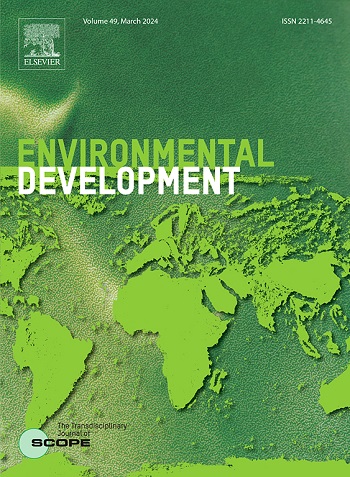梦想住房从居民视角探究影响社区住房宜居性的有效因素
IF 4.7
2区 环境科学与生态学
Q2 ENVIRONMENTAL SCIENCES
引用次数: 0
摘要
本研究的目的是提出 "宜居住房 "这一新的宜居概念,以确定决定居民对住房内部和周边环境主观满意度的因素,并通过主观和客观数据估算城市街区的宜居水平。为了填补宜居性研究,尤其是住房宜居性研究方面的知识空白,本研究探讨了宜居性与住房指标之间的联系,并对不同社会经济背景的城市街区居民的这一联系进行了评估。本研究采用聚类抽样法,在卡拉杰都市区(作为主要城市)的居民区中选择了 8 个居民区(作为研究范围)和 402 个案例(作为根据科克伦公式得出的样本统计),对宜居住房指标进行了实证分析评估。问卷的统计分析包括准备加权数据,以及在 SPSS 环境下使用探索性因素分析方法确定重要和有影响的因素。通过结合原始数据和从 EFA 方法中提取的指标权重,利用多标准决策模型(TODIM)对街区进行分层。结果显示,环境、社会、经济和物理宏观因素对住房宜居性的影响最大。设施和基础设施、开放和公共空间、清洁和污染等指标是提高宜居性和满意度的指标,而地方联系和归属感、通达性和交通、个人和社会安全等指标则是降低宜居性的指标。总体而言,这些街区的住房宜居性状况各不相同,没有连续性和规律性原则。邻里之间指标影响的差异是由于邻里之间的内在差异和人们的心理过滤造成的。从结果验证中获得的(89%)重合度表明,两种空间分析方法的结果存在着非常不明显的差异和可接受的一致性。考虑到人与城市环境的关系以及人类生活质量的重要性,建议在任何规模的宜居性调查中都要特别关注社区导向性和地方资产,以及自下而上的方法。此外,本研究还提出了通过提高住房宜居性实现城市可持续性的重要政策含义。本文章由计算机程序翻译,如有差异,请以英文原文为准。
Dream housing: Exploring effective factors on housing livability in the neighborhood from the perspective of residents
The purpose of this study is to develop a new concept of livability as "livable housing" in order to identify the factors that determine the subjective satisfaction of residents with the internal and surrounding environment of the housing and to estimate its level among urban neighborhoods with subjective and objective data. In order to fill the knowledge gap in livability studies, especially housing livability, the present study has looked at the link between livability and housing indicators and has evaluated this link among the residents of urban neighborhoods with different socio-economic contexts. This study has been evaluated the indicators of livable housing in an empirical analysis among the neighborhoods of Karaj metropolitan area (as a leading city) with the cluster sampling method and choosing 8 neighborhoods (as the scope of the research) as well as 402 cases (as a sample statistics derived from Cochran's formula).In this evaluation, the questionnaire with (72 sub-indicators in 15 groups) is the main criterion for data collection, and the analyzes are using statistical and spatial combined methods. The statistical analysis of the questionnaire includes preparing the data for weighting and determining the important and influential factors with the exploratory factor analysis method in the SPSS environment. The stratification of neighborhoods is done with the multi-criteria decision-making model (TODIM) by combining the raw data and the weight of indicators extracted from the EFA method. Also, the accuracy of the results has been measured with the RMS method and the use of spatial methods in (GIS).The results showed environmental, social, economic and physical macro-factors respectively have the greatest effects on the livability of housing. The indicators of facilities and infrastructures, open and public space, cleanliness and pollution were the indicators of increasing livability and satisfaction, and the indicators of place connection and belonging, access and transportation, personal and social security were the indicators of decreasing livability. In general, the neighborhoods are in different conditions of housing livability and without continuity and principles of regularity. This difference in the different effects of indicators in neighborhoods is due to the inherent differences of neighborhoods and people's mental filters. The (89%) overlap obtained from the validation of the results indicates the existence of a very insignificant difference and acceptable agreement of the results of the two methods of spatial-spatial analysis. Considering the importance of the relationship between man and the urban environment and the quality of human life, it is recommended to pay special attention to community-orientedness and local assets and a bottom-up approach in livability surveys at any scale. Also, this study suggests important policy implications for achieving urban sustainability by improving housing livability.
求助全文
通过发布文献求助,成功后即可免费获取论文全文。
去求助
来源期刊

Environmental Development
Social Sciences-Geography, Planning and Development
CiteScore
8.40
自引率
1.90%
发文量
62
审稿时长
74 days
期刊介绍:
Environmental Development provides a future oriented, pro-active, authoritative source of information and learning for researchers, postgraduate students, policymakers, and managers, and bridges the gap between fundamental research and the application in management and policy practices. It stimulates the exchange and coupling of traditional scientific knowledge on the environment, with the experiential knowledge among decision makers and other stakeholders and also connects natural sciences and social and behavioral sciences. Environmental Development includes and promotes scientific work from the non-western world, and also strengthens the collaboration between the developed and developing world. Further it links environmental research to broader issues of economic and social-cultural developments, and is intended to shorten the delays between research and publication, while ensuring thorough peer review. Environmental Development also creates a forum for transnational communication, discussion and global action.
Environmental Development is open to a broad range of disciplines and authors. The journal welcomes, in particular, contributions from a younger generation of researchers, and papers expanding the frontiers of environmental sciences, pointing at new directions and innovative answers.
All submissions to Environmental Development are reviewed using the general criteria of quality, originality, precision, importance of topic and insights, clarity of exposition, which are in keeping with the journal''s aims and scope.
 求助内容:
求助内容: 应助结果提醒方式:
应助结果提醒方式:


